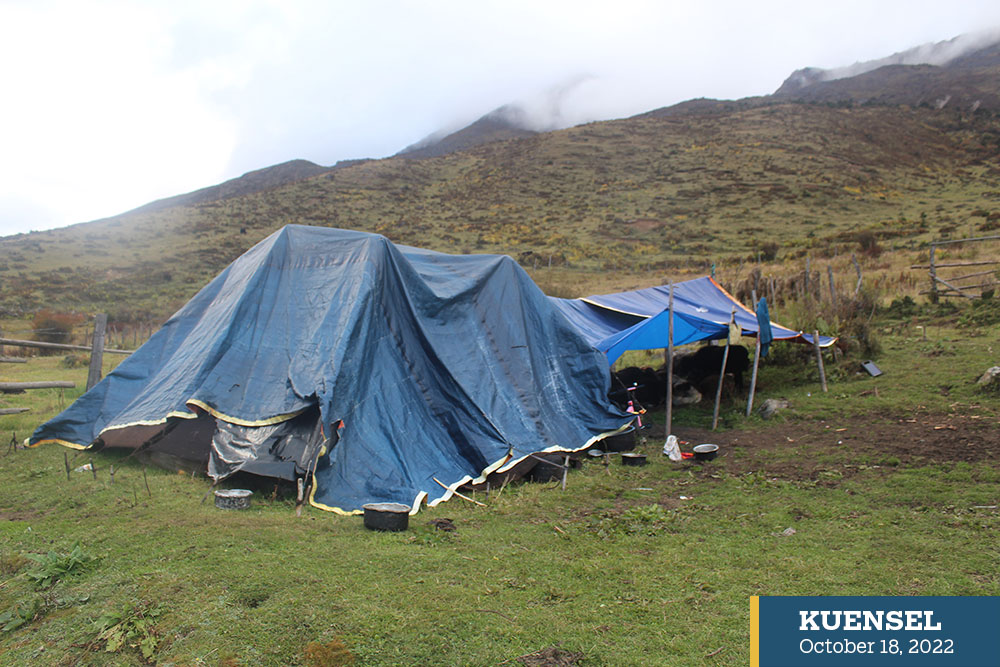Increasingly feeling the heat of climate change, Bhutan shows what is at stake in the Himalayas through a rare high-altitude race, followed by a climate action conclave
Staff Reporter
The five-day Snowman Race running at an average elevation of over 4,267m (14,000 ft) and multiple peaks summiting 5,470m (17,946 ft) ended yesterday in Bumthang.
It follows a historic high-altitude trekking route of Snowman Trek, which normally takes up to 20 days to complete. The toughness of the race is not the only aspect that makes the Snowman Race historic. Its goal to draw the world’s attention to the dangers that climate change is brewing in the Himalayas is what makes the race more significant.
The Intergovernmental Panel on Climate Change, IPCC, report 2021 paints an alarming picture of melting Himalayan glaciers in the face of the climate crisis and the strains this is placing on the hundreds of millions of people globally who rely on glaciers for water, agriculture and power.
The International Centre for Integrated Mountain Development, ICIMOD, says the Third Pole or High Mountain Asia, which spans Asian 12 countries will continue to warm by at least 1.8 to 2.2 degree Celsius even if the global average temperatures stable at 1.5 degrees over pre-industrial levels and is projected to lose a third of the glacier volume by the end of the century.
“Seeing the glacial retreat at Narithang was very impactful,” shared Byron Powell, a Snowman Race athlete from the United States. “A kilometer of glacier is missing with thousands of Olympic swimming pools worth of volume gone.”
To complement the objectives of the Snowman Race, a climate conclave begins in Bumthang today.
“Both Snowman Race and climate conclave draw inspiration from the prescient wisdom of His Majesty the King on the conservation of natural and cultural heritage. It aspires to bring the world’s attention to climate change, one of the defining issues of our time, and its impacts, particularly on the lives of people living in fragile mountain ecosystems,” said the Snowman Race Secretariat.
Aptly themed “Bhutan Climate Action Conclave: For Glaciers, Mountains and People”, the conclave seeks to foster partnership and action ahead of the UN Climate Change Conference, COP27 to be held from 6 to 18 November in Egypt and Biodiversity COP15, the biggest biodiversity conference in a decade, happening in December in Canada.
The conclave is led by the National Environment Commission and Snowman Race Secretariat with WWF Bhutan providing lead technical coordination support, and Tourism Council of Bhutan, Bhutan for Life and UNDP Bhutan as convening partners.
It will bring together national, regional, and global climate experts and leaders to spotlight the vulnerabilities and challenges faced by Bhutan and other mountain countries in the Hindu Kush Himalayan region living on the frontlines of climate change.
The conclave will draw attention to the urgency of a society-wide action, particularly the important role of non-state actors, including businesses and the private sector. Complementing the race, the conclave seeks to make Bhutan a voice of the vulnerable mountain ecosystem reeling from climate change.
Bhutan, for instance, doesn’t contribute to climate change. In fact, it is one of the first carbon-negative countries in the world. Yet, it is bearing the brunt of rising temperatures, evident in receding glaciers. This is increasing the threat of glacial lake outburst floods, and extreme weather events, including intense and erratic rainfall and increased incidences of landslides and flash floods.
National Environment Commission secretary, Sonam P Wangdi said that the Climate Change Policy of the Kingdom of Bhutan 2022 and the Second Nationally Determined Contribution lay down clear plans and strategies of low-carbon climate-resilient development pathway in line with 1.5 degrees goal of the Paris Agreement. “What is critical for us today is the climate finance to support our ambition, realize our commitment and build resilience.”
“Climate finance is key to leveraging climate action and should be grant-based, easily accessible, predictable, sustainable and scalable. Climate finance committed by developed countries must be made available,” he said.
He said that further, climate financing must be complemented with the transfer of transformative green technologies, which are environmentally sustainable, disaster resilient and contribute to green development.
“Global support and solidarity are the only way to resolve the climate emergency,” he said.


